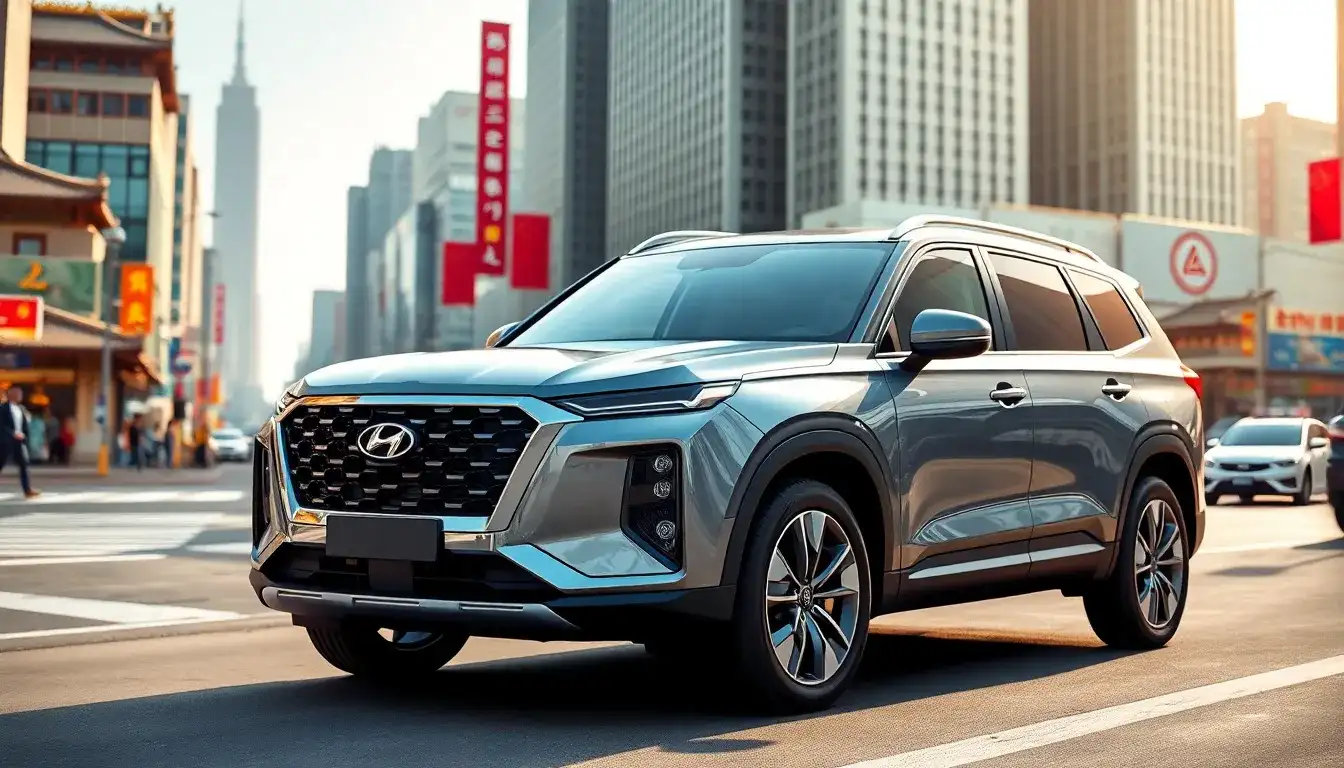
Hyundai Motor Company is set to re-enter the Chinese market with the launch of the third-generation Palisade hybrid model, amidst declining sales in the region. Unlike their previous focus on compact hybrid vehicles, this time they will prioritize the high-yield large Sport Utility Vehicle (SUV) segment with the Palisade hybrid.
On April 8, sources from Hyundai and the automotive parts industry revealed that the company has developed a domestic production plan for the third-generation Palisade (LX3) hybrid SUV. Mass production of the hybrid model is scheduled to begin on April 3, with plans to export to North America by the end of April, followed by shipments to the Australian market in August. Additionally, products aimed at the Chinese market are also slated for release in August. The Palisade hybrid is a key model in Hyundai’s strategy to address the temporary demand stagnation in the electric vehicle (EV) market.
Previously, Hyundai had only offered hybrid options in models such as the Elantra, Sonata, and Santa Fe. However, with the introduction of the third-generation Palisade, the company is transitioning to larger hybrid vehicles. The first model to utilize Hyundai’s newly developed next-generation hybrid system, “TMED-2,” is the Palisade, reflecting this shift.
This is not Hyundai’s first foray into the Chinese hybrid vehicle market. The company entered this space in 2015 and 2020 with the Elantra hybrid and Tucson hybrid, respectively. However, a strategic push by the Chinese government to swiftly transition from internal combustion engines to electric vehicles, coupled with factors like the 2017 THAAD incident, led to a decline in sales, resulting in both models being discontinued within 3 to 4 years.
Currently, Hyundai’s offerings in the Chinese market include the Elantra, Sonata N series, Tucson, Santa Fe, and Mufasa (a strategic SUV for China), all of which are internal combustion engine vehicles. Despite this, Hyundai is once again entering the hybrid market in China due to the existing demand for hybrid vehicles. According to the China Passenger Car Association (CPCA), as of February this year, hybrid vehicles accounted for 17.6% of total fuel sales in China, while internal combustion engines made up 53.1% and electric vehicles held a 29.2% share.
In the hybrid vehicle market, Chinese automakers are competitive. BYD, China’s largest automobile manufacturer, reported that plug-in hybrid electric vehicles (PHEVs) constituted about 60% of its total global sales last year. They recently launched the PHEV model “Jin LDM-I,” which can travel 2,500 kilometers when fully fueled with gasoline and electricity. However, the PHEV approach adopted by Chinese brands requires both refueling and charging, making it challenging for consumers in areas with inadequate infrastructure.
In contrast, Hyundai is among the few manufacturers, along with Toyota, producing pure hybrid electric vehicles (HEVs) that do not require charging. This positions Hyundai to target up to 70% of the Chinese non-electric vehicle market.
Hyundai plans to increase its market share in China through diversification of powertrains, including the Palisade hybrid, and local production. The company aims to commence mass production of extended-range electric vehicles (EREVs) by the end of 2026, with plans to manufacture them at its Beijing Hyundai plant. Currently, the Santa Fe and Genesis GV70 are the models designated for EREV development. A dedicated electric SUV for the Chinese market, designed by Hyundai’s Yantai Technical Research Center, is also in development and is expected to launch in September this year.
Since the THAAD incident in 2016, Hyundai’s sales in China have been on a downward trend. It is estimated that Hyundai sold over 1.14 million vehicles in China in 2016, but this number plummeted to just over 154,000 last year.







